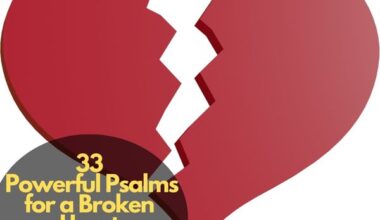Table of Contents Show
The date of Easter, one of the most important and frequently celebrated Christian holidays, changes from year to year. Have you ever wondered how the Easter dates are determined? In this article, we will look at the fascinating method of calculating the dates of Easter. From historical calculations to astronomical considerations, various factors influence the timing of this festive festival. Join us as we explore the processes used to calculate Easter dates and obtain a better grasp of this annual holiday.
How Are Easter Dates Determined
According to mathematical calculations, Easter is observed on the first Sunday following the full moon date, on or after March 21. Easter is celebrated the following Sunday if the full moon falls on a Sunday. Although Easter is liturgically associated with the start of spring in the Northern Hemisphere (the March equinox) and the Full Moon, its timing is not based on the actual astronomical date of either event.
The Church observes the March equinox on March 21, regardless of time zone, but the actual date fluctuates between March 19 and March 22, depending on the time zone.
The date of the Paschal Full Moon, which determines the date of Easter, is calculated using mathematical approximations based on a 19-year cycle known as the Metonic Cycle. Both dates may coincide with astronomical occurrences, although not always.
Astronomical vs. Ecclesiastical Dates
In years when the church’s March equinox and Paschal Full Moon dates do not match the astronomical dates of these events, there may be some doubt concerning the day of Easter. In 2019, for example, the March equinox in the Western Hemisphere occurred on Wednesday, March 20, but the first full moon of spring occurred on Thursday, March 21 in several time zones.
If the Church had observed the timing of these astronomical occurrences, Easter would have been celebrated on March 24, the Sunday following the Full Moon on March 21.
However, the Church’s lunar calendar set the Full Moon date in March, commonly known as the ecclesiastical Full Moon, on March 20, one day before the ecclesiastical date of the March equinox, March 21. As a result, the Easter date was determined by the next ecclesiastical full moon, which occurred on April 18.
The earliest and latest Easter dates
According to the Metonic cycle, the Paschal Full Moon occurs on a recurrent sequence of 19 dates between March 21 and April 18. Easter is celebrated on the Sunday following the Paschal Full Moon; therefore, it can fall on any date between Sun, 31 Mar 2024, and April 25.
Why is Easter celebrated in the spring?
According to the Bible, Jesus Christ died and rose at the time of the Jewish Passover, which was observed on the first full moon after the vernal equinox. This quickly led to Christians celebrating Easter on various days. Some churches celebrated Easter on Passover Day toward the end of the second century, while others did so on the following Sunday.
In 325 CE, the Council of Nicaea decreed that Easter would be celebrated on the first Sunday following the first full moon on or after the spring equinox. (*) From that moment forward, Easter was based on the ecclesiastical estimate of March 21 for the vernal equinox.
Orthodox Easter
Not all Christians observe Easter according to the Gregorian calendar; most Orthodox Christians continue to use the Julian calendar.
Orthodox Easter, like Easter on the Gregorian calendar, occurs on a Sunday between March 22 and April 25 in the Julian calendar (1753-2400). In the Gregorian calendar, this is April 3 to May 10. In some years, Orthodox Easter coincides with Western Easter. The next time the two Easter dates overlap is in 2025 (April 20).
Proposed Easter Date Reforms
A variety of reforms have been proposed for the Easter date. For example, in 1997, the World Council of Churches recommended a modification to the Easter computation that would replace an equation-based method with direct astronomical observation.
This would have resolved the Easter date discrepancy between churches using the Gregorian and Julian calendars. The reform was planned for implementation in 2001, however, it has not yet been adopted.
Another example of a proposed reform happened in the United Kingdom, where the Easter Act 1928 was passed, allowing the Easter date to be set as the first Sunday following the second Saturday in April. However, this law was not implemented and even remains on the UK Statute Law Database.
Conclusion
Easter dates are determined by a sophisticated and intricate procedure that includes historical, theological, and astronomical considerations. The calculation is based on a combination of the ecclesiastical calendar and astronomical events, specifically the vernal equinox and lunar phases. The Paschal Full Moon is a critical reference point for determining the day of Easter.
Over the ages, several systems and traditions have arisen, resulting in differences in how Easter dates are calculated across Christian groups. The Western and Eastern Orthodox churches, for example, may use different computations, resulting in occasional variations in Easter dates. Regardless of the specific method used, determining Easter dates commemorates Jesus Christ’s resurrection and is the primary event of the Christian religion. It is a time of joy, hope, and regeneration for believers worldwide.








